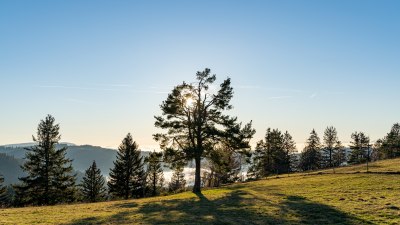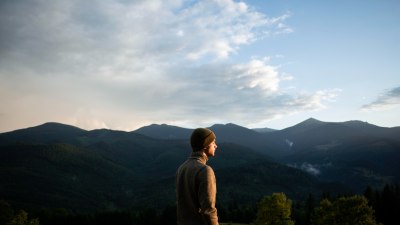How to Find and Plan a Remote Escape Without the Crowds
Discover tips for planning a secluded remote escape, avoiding crowds and enjoying nature peacefully.

In an era where crowded tourist spots can sap the joy out of traveling, planning a remote escape has become an increasingly appealing option. The idea of finding a peaceful destination, away from the hustle and bustle of popular attractions, is attractive to many. Here we will explore how to find and plan a remote escape that allows you to enjoy the tranquility of nature while avoiding large crowds.
Understanding Your Needs
The first step in planning a successful remote escape is to understand your personal preferences and needs. Ask yourself what you are looking for in a getaway. Do you prefer mountains, beaches, forests, or deserts? Each environment offers unique experiences and organic escapes from everyday life. Additionally, think about what activities you enjoy. Hiking, kayaking, biking, or simply lounging with a book can all shape your destination choice.
Choosing the Right Destination
Once you have a clearer idea of what you want from your remote escape, it's time to research potential destinations. The goal is to find locations that are not heavily trafficked by tourists. Begin with less popular national parks or protected areas where visitors are limited. Small-town getaways can also provide a remote feel with fewer people around to interfere with your experience.
Consider states or regions that are known for their natural beauty but are not overrun with visitors. For example, while many flock to Yellowstone or Yosemite, many other stunning parks, such as the Big Bend National Park in Texas or the Great Sand Dunes National Park in Colorado, may offer the solitude you seek.
Utilizing Technology to Find Hidden Gems
Technology can be a great ally in discovering hidden gems for your remote escape. Use social media platforms like Instagram to search for lesser-known locations. By using hashtags related to your interests and exploring geotags, you can find beautiful spots that may not be as well-documented.
Additionally, travel blogs and websites dedicated to off-the-beaten-path ingredients can provide tips on secret locations that might not show up in travel guides. Join travel forums or groups where people share their favorite remote destinations; these can be gold mines for discovering unique options.
Timing is Everything
The time of year you plan your escape plays a critical role in crowd levels. Aim for shoulder seasons—periods just before or after the peak tourist season. These times not only often provide better prices but also less crowded environments.
For instance, if you’re looking to visit a beach, try visiting in late spring or early fall rather than the height of summer. Similarly, national parks may be less crowded in spring or late fall. Check the school holiday calendars as well; avoiding travel during peak family vacations can drastically reduce the number of people you’ll encounter.
Planning Your Accommodation
Where you stay can make or break your remote escape. Look for unique lodging options that emphasize privacy. This could be a cabin in the woods, a quaint bed-and-breakfast, or an Airbnb that’s set far away from the crowd. Private rentals often provide a high degree of seclusion and can offer a directly immersive experience with your surroundings.
When booking accommodations, prioritize places that boast good reviews about their isolation and tranquility. Sometimes, even hotels in previously visited locations offer secluded sections with stunning nature views or balconies for private sunsets.
Consider Alternative Activities
While many may automatically think of mainstream tourist activities, consider exploring more unique experiences that align with a remote escape. Look into local guided tours that focus on hiking, nature walks, stargazing, bird watching, or local cuisine classes. These activities can allow you to deeply connect with the environment and the culture while steering clear of the standard tourist traps.
Packing Smart for Your Escape
To ensure you make the most of your remote escape, meticulous packing is crucial. Consider the weather conditions, type of activities planned, travel distance, and personal preferences. If you’re traveling to a mountainous area, sturdy hiking boots and layered clothing will be necessary. Meanwhile, a beach trip would require swimsuits, sun hats, and towels.
Do not forget to bring along essentials like insect repellent, sunscreen, and a first aid kit. A good backpack, a reusable water bottle, and some snacks are also critical for staying comfortable and happy while exploring. The fewer items you carry that draw from commercial areas, the better.
Creating a Flexible Itinerary
When planning your remote escape, keep in mind that flexibility is your ally. A rigid itinerary can lead to unnecessary stress, especially if unexpected conditions arise, such as weather changes or minor delays. Instead, outline key activities you’d like to experience but remain open to adjustments based on local insights and personal inspiration.
For instance, if you planned a hike and discover that a local guide is leading a unique tour nearby, allow yourself the freedom to switch your plans. Memorable experiences often arise from spontaneity, affording you the chance for a deeper connection to your surroundings.
Disconnect to Reconnect
One of the appeals of a remote escape is the opportunity to disconnect from the frenetic pace of daily life. While you might want to capture your experiences to share with friends, consider limiting your device usage to embrace the present moment fully. This could mean turning off notifications and enjoying nature without the buzz of interruption.
Use the opportunity to reconnect with yourself, engage in journaling, or meditate in the beauty of your surroundings. These practices enhance the benefits of a remote escape and allow for more profound relaxation and rejuvenation.
Preparing For Return
As your remote escape comes to an end, prepare a buffer zone where you allow yourself to transition back into daily life. Consider taking an extra day post-trip to gradually acclimate before jumping back into your regular routine. Reflecting on your experiences and writing down highlights can help solidify the positive impacts of your retreat.
Finding and planning a remote escape is attainable with a bit of research and thoughtfulness. By understanding your needs, utilizing technology, planning around timing, and accommodating for flexibility, you can discover serene destinations that foster relaxation, rejuvenation, and a true connection with nature. Embrace the beauty of the world without the crowds around you, and enrich your travel experiences like never before.











